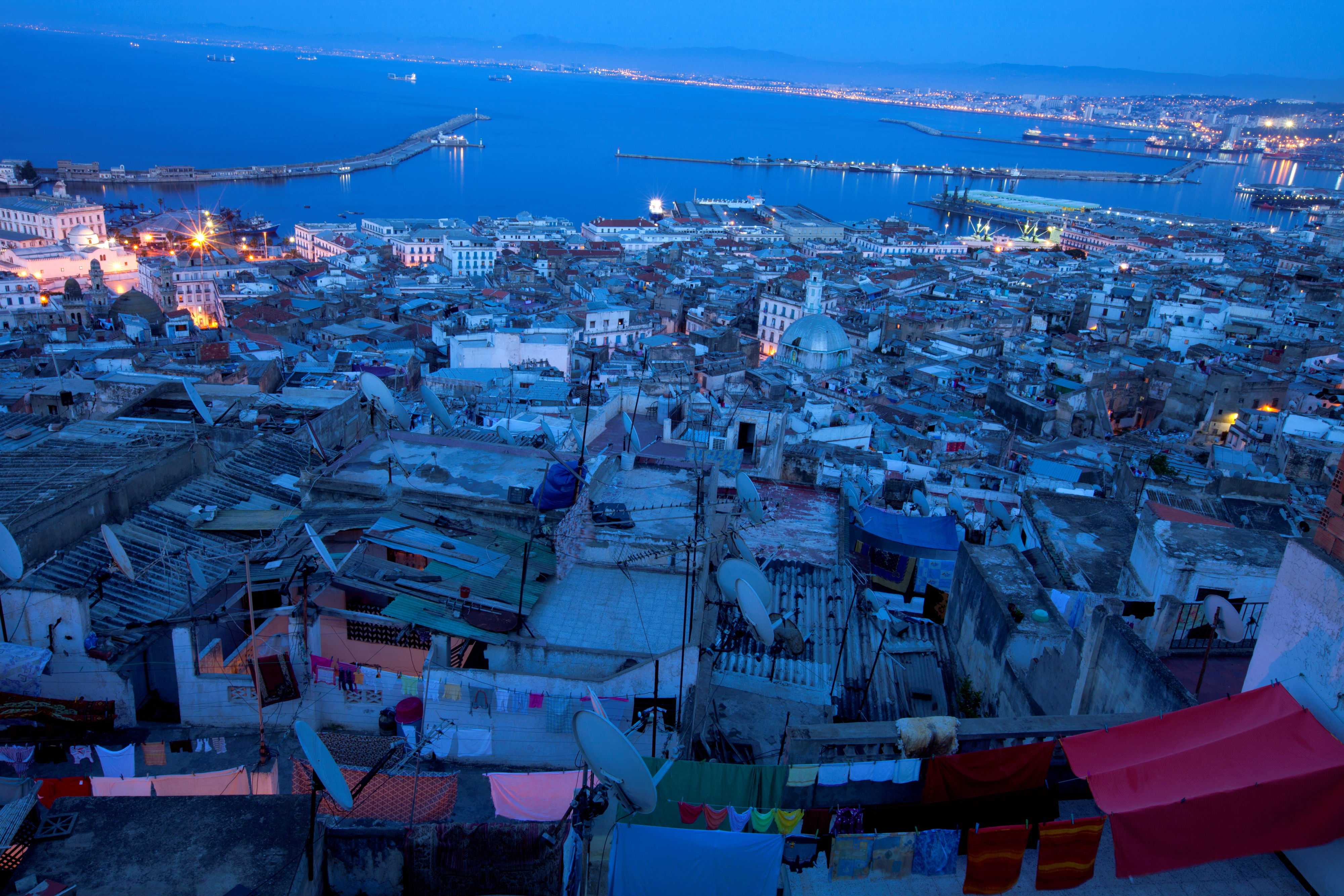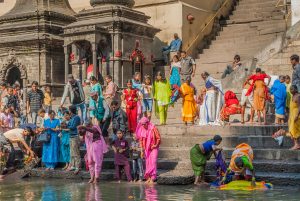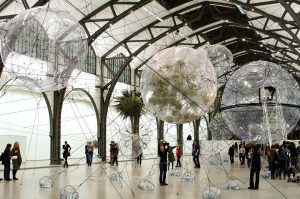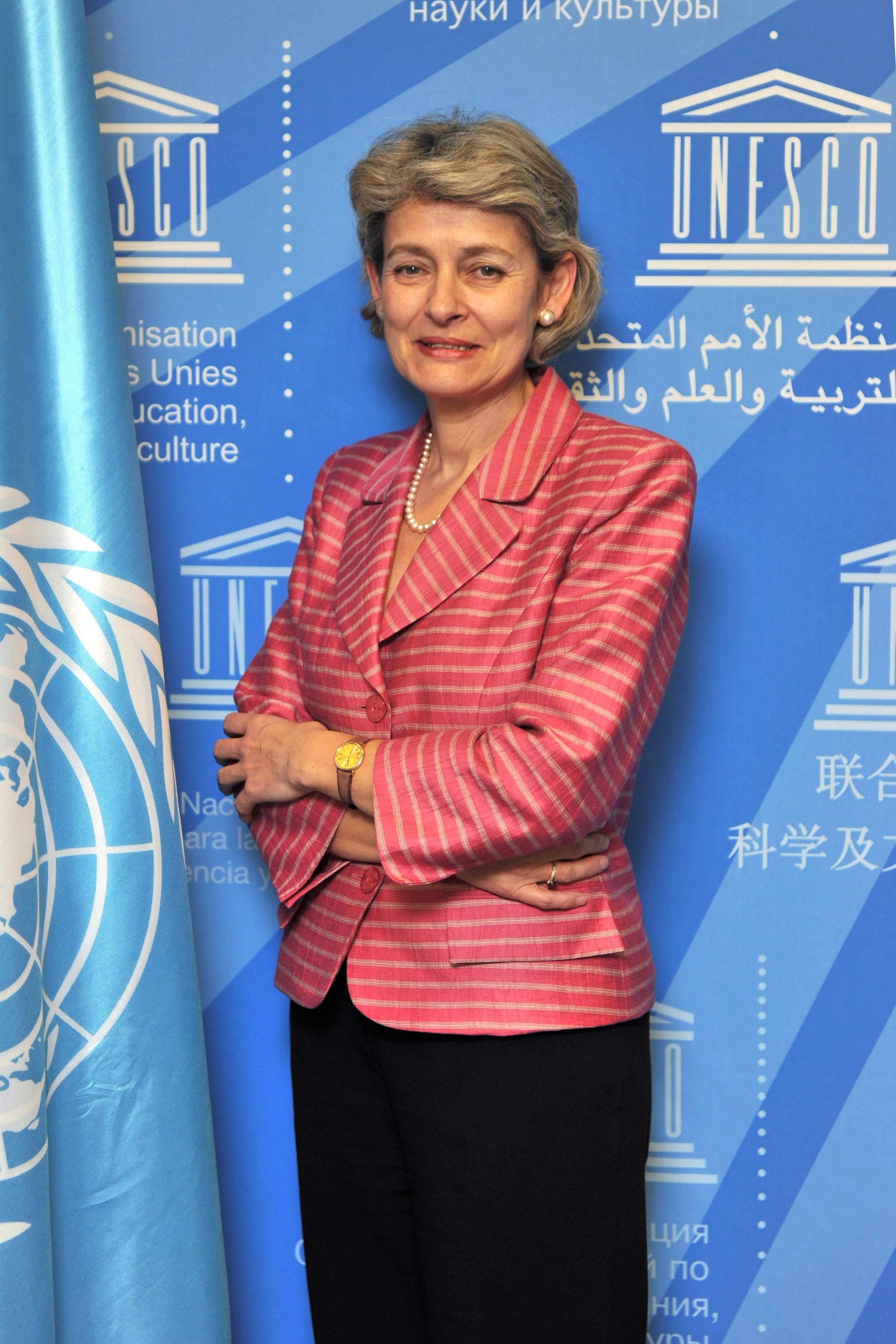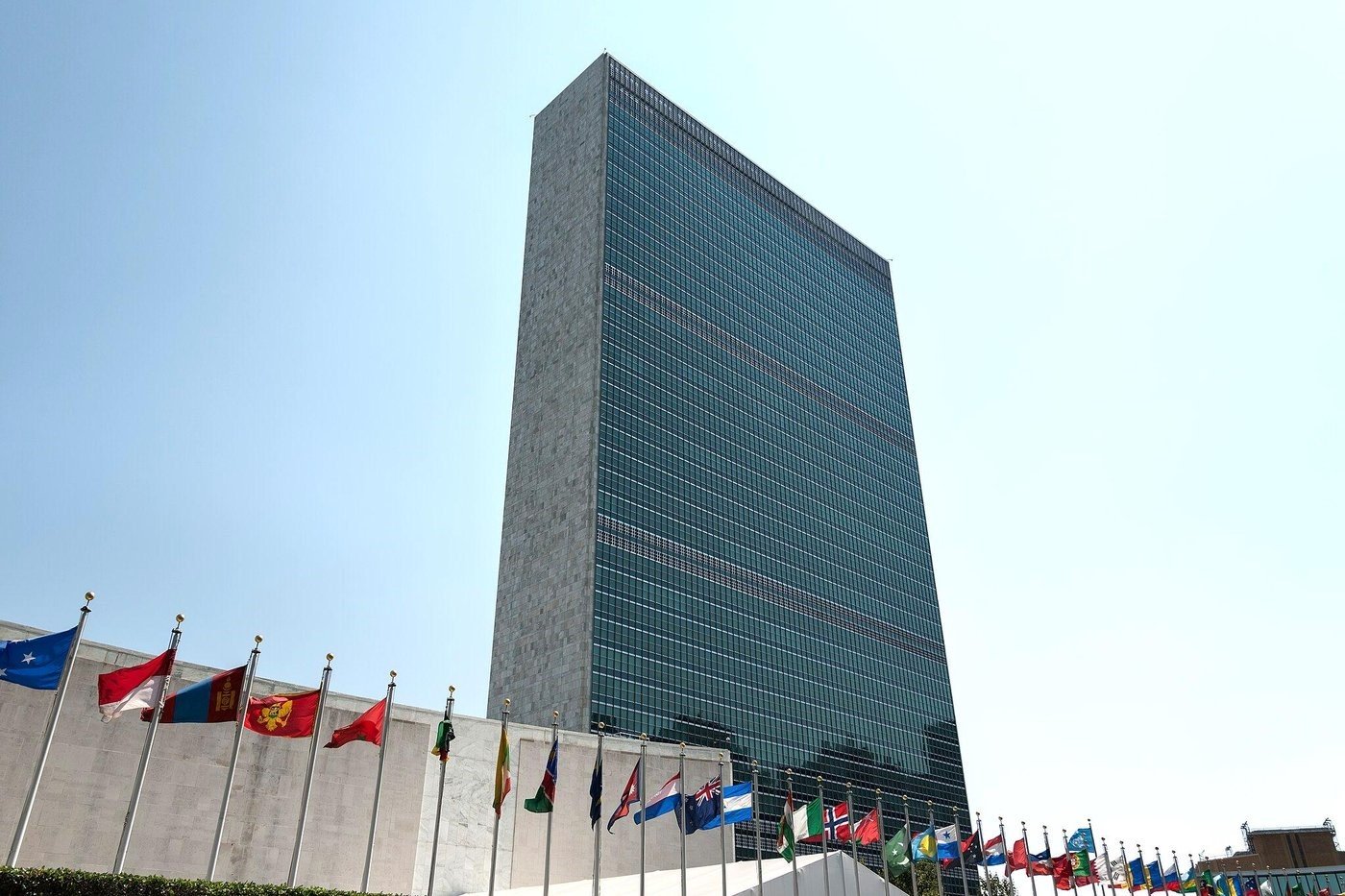EDITOR’S NOTE: THIS PIECE IS AUTHORED BY IRINA BOKOVA, DIRECTOR- GENERAL OF UNESCO SINCE 2009. THIS PIECE IS PART OF A SERIES EXPLORING THE SUSTAINABLE DEVELOPMENT GOALS. SEE THE INTRODUCTION TO THE SERIES HERE.
With the adoption of the 2030 Agenda for Sustainable Development by the United Nations in September 2015, the world agreed upon an ambitious roadmap. This marks a significant shift from traditional approaches to development cooperation and is innovative in many important ways. The 2030 Agenda fully integrates for the first time the role of culture, including cultural heritage and the diversity of cultural expressions, as an enabler of sustainable development across more than half of the 17 Sustainable Development Goals (SDGs).
SDG 11 specifically addresses the growing urbanization of our planet, with the aim of making cities and human settlements inclusive, safe, resilient and sustainable. The inclusion of a specific target dedicated to safeguarding cultural heritage (Target 11.4), represents a major breakthrough, as it acknowledges the crucial role of culture in this endeavor.
For a full mindmap containing additional related articles and photos, visit #SDGStories
With more than half of humanity – 3.9 billion people – living in cities, there can be no sustainable development without sustainable cities. This new urban era demands new innovative and integrated approaches to make cities more inclusive, to foster dialogue and understanding in an ever more diverse environment, enhancing the quality of urban spaces, achieving environmental sustainability and building resilience to the effects of climate change, disasters and conflicts. The latest global debates have shown that the role of culture for sustainable urban development is manifold, ranging from promoting inclusive social and economic development, enhancing cities’ liveability and evolving identities, to fostering a quality built and natural environment. This article seeks to present some of its most powerful assets.
Safeguarding urban identities
Culture has historically been a driving force of urban development. Stemming from social and cultural processes, urban heritage reflects the evolving identities, expectations and visions of societies over time. Urban culture is an open book on the different stages of urban development, and the software to move it forward.
Yet, urban cultural practices – both traditional and contemporary – face pressures from globalization, unsustainable tourism and uncontrolled gentrification. While globalization processes enhance interaction between cultures, they also often represent a challenge for cultural diversity and the safeguarding of traditional cultural practices. Unsustainable tourism can also detrimentally affect the ability of communities to safeguard and transmit their cultural practices and assets. Uncontrolled gentrification in historic areas can lead to the exclusion of vulnerable communities, who are often the historic dwellers of these areas and represent repositories of cultural memory.
Cultural heritage is also increasingly targeted by extremists, particularly in conflict and post-conflict areas. As visible platforms of cultural diversity, cities and their cultural institutions are threatened by looting and intentional destruction. Cultural heritage, including cultural traditions and expressions, which are considered key markers of individual and community identity, are also targeted for their symbolic value. Protecting this heritage is, therefore, a key security issue, essential to the maintenance of peaceful, vibrant and sustainable cities.
Safeguarding cultural heritage and the diversity of cultural expressions, therefore, goes hand-in-hand with achieving sustainable urban development, as it is only through the full respect and integration of culture that economies, people and the environment can thrive. A number of national governments and local authorities, in particular, have indeed built on the power of culture to boost the sense of belonging, urban identities that are instrumental for the sustainable development of cities.
Culture as a force for urban inclusion.
As hubs of migration and trade, cities draw their strength from the diversity of their populations. Cities are probably humanity’s most powerful and effective inventions to bring people and talents together, to foster new ideas and create a sense of unity in diversity. However, new challenges to social cohesion emerge. Social and spatial segregation has become a key issue in many cities around the world. The historical function of cities as melting pots and catalysts for intercultural dialogue is jeopardized in many urban areas experiencing growing inequality, discrimination and exclusion.
“Re-humanizing” the city is an essential first step to fostering more inclusive societies. Enhancing local culture and recognizing cultural diversity can be a powerful way to do so, by fostering tolerance, preserving the social fabric and promoting pluralism. People-centred cities are culture-centred spaces. The social inclusion of disadvantaged groups can be facilitated through wider recognition of their cultural identity.
In light of the evolving identities of cities, a growing number of decision-makers have adopted proactive policies to recognize and promote cultural diversity as an asset for social inclusion in cities, and promote intercultural understanding as essential to social cohesion. Sustainable and inclusive urban development cannot be achieved without addressing the challenges posed by racism, discrimination, as well as other barriers that impede the full realization of human rights.
Cultural infrastructure, such as museums, can offer spaces for this intercultural dialogue, human rights education and knowledge sharing. Heritage conservation processes can serve as vectors for dialogue and inclusion, allowing different urban communities and social groups to build a consensus on the value of their common heritage, creating a larger sense of belonging.
Related article: “EDUCATION: A COMMITTED FUTURE“
Quality urban environments are shaped by culture
Well designed and well managed public spaces can also encourage healthy lifestyles, foster public safety, create economic value, and contribute to environmental aims by promoting walkability and supporting biodiversity. As renowned architect, Jane Jacobs, once said, “Streets and their sidewalks, the main public places of a city, are its most vital organs”. Yet, despite their importance, public spaces are often poorly integrated or neglected in planning and urban development, hampering economic activities, increasing pollution, and reducing social stability and security. Quality urban environments should not be regarded as costly interventions for wealthy countries or cities. On the contrary, when based on a cultural approach, quality urban environments enhance the identity, and livability and therefore sustainability of cities for communities and individuals.
Culture can be the key to realizing the potential of public spaces as drivers of sustainable development. As the quality of public spaces becomes a key item on the urban agenda, municipalities and civil society actors are increasingly promoting them as venues for cultural events, encounters and participation. New attention is also being given to the quality of urban design, with local authorities increasingly inviting artists and architects to reshape urban environments and reinvent urban identities. The harmonious incorporation of contemporary architecture into the historic urban fabric is also promoted.
These trends show cultural heritage is no longer considered within the perimeter of ‘old’ cities or historical areas. Heritage is no longer an object of interest for a small élite or specialists. Today, cultural heritage belongs to the public, as demonstrated by the great interest of citizens and policy-makers in its protection and safeguarding. Place-based urban development, which is rooted in and shaped by the people and communities that inhabit it, can contribute to social cohesion, equity and inclusion.
PHOTO: Sucre(Plurinational State of Bolivia) PHOTO CREDIT: Orlando Contreras López/Flickr
Mumbai, India: Community participation contributes to a vibrant arts district
Kala Ghoda precinct in South Mumbai, India, is a vibrant, crescent-shaped area with a concentration of historic buildings, restaurants and cafés, as well as a flourishing art scene generated by numerous galleries, designer boutiques, and culture-related activities. The most popular of these is the annual Kala Ghoda Arts Festival, a nine-day event held each February, which attracts a wide variety of artists, performers and craftspeople. Yet Kala Ghoda was not always a lively centre of arts and culture; 20 years ago, it was known primarily for its surrounding libraries and colleges, and many of its historic buildings were in disrepair.
This began to change when the Mumbai-based Urban Design Research Institute (UDRI), along with a group of architects, conducted a survey of the neighbourhood and discovered a high concentration of contemporary art galleries. In their Kala Ghoda Conservation Plan, UDRI proposed that Kala Ghoda be designated as an arts district, prompting the precinct’s artists, gallery owners, and cultural institutions to come together to form the Kala Ghoda Association in 1998. The Kala Ghoda Arts Festival was launched one year later and was an instant success. With the funds generated from the festival, the UDRI began a process of improving Kala Ghoda’s street furniture and pedestrian access, while also restoring its historic buildings, including the David Sassoon Library and gardens, the Elephantine College, the Institute of Science, the Chhatrapati Shivaji Maharaj Vastu Sangrahlaya (formally the Prince of Wales Museum), and the Horniman Circle garden. Before long, new shops, restaurants and cafés arrived and Kala Ghoda emerged as the dynamic arts district South Mumbai’s residents know today.
The success of Kala Ghoda offers several key lessons that may be applied to other contexts. For example, community participation proved essential to the designation of the precinct as an arts district and the development of the art festival. The restoration of historic buildings served to give Kala Ghoda a unique identity in a city of more than 18 million people. Moreover, in Mumbai, where public space is at a premium and pedestrian access is scarce, the highly-walkable Kala Ghoda stands out, encouraging both tourists and residents alike to enjoy its cultural offerings and historic urban fabric.
Promoting inclusive economic development
Culture-based urban strategies can also contribute to sustainable economic growth, opening up new pathways for job creation and locally-owned economic development. There is a wide body of evidence pointing to the growing importance of culture for sustainable development. The volume of world trade of creative goods and services doubled between 2002 and 2011, reaching $624 billion, while exports of creative goods in developing countries grew 12.1% annually on average over this period. Worldwide, some 30 million jobs depend directly on the cultural sectors, most of which are in cities. The cultural and creative industries, the performing arts and heritage conservation activities can serve as a source of qualified jobs for the urban poor, in both the formal and informal sectors.
Urban heritage conservation is also a strong economic driver in both the Global North and Global South. In Europe, built heritage renovation and maintenance represents 27.5 percent of the value of the continent’s construction industry. The development of sustainable cultural tourism can also serve as a catalyst for revenue generation to upgrade urban infrastructure, especially in developing countries. Today, tourism represents 9% of the world’s Gross Domestic Product (GDP), with 40 percent of all trips including a cultural element.
Creativity and innovation, including digital technologies, should be fostered as resources for sustainable urban development and aim to improve local livelihoods. Safeguarding and promoting culture at the local level is a way to develop endogenous resources and create conditions for sustainable revenue generation.
Ensuring the environmental sustainability of cities and building their resilience
The rapid pace of urbanization and population growth in recent decades has also resulted in a greater concentration of people, jobs and property in informal settlements and hazardous areas, oftentimes with devastating consequences for people and the environment. In response, SDG 11 aims to achieve resilient cities and human settlements by reducing disaster risks, mitigating the effects of climate change and promoting environmental sustainability.
Engaging local governments, especially mayors, and providing them with information and tools, is therefore, crucial to enhance the resilience of cities to climate change and natural hazards. Moreover, failures in urban planning models over the last decades call for culturally-sensitive, sustainable urban development models, in line with human rights principles. The example of the UNESCO World Heritage Cities, the Creative Cities Network, the International Coalition of Inclusive and Sustainable Cities – ICCAR, the Megacities Alliance for Water under Global Change, as well as contributions of UNESCO’s Biosphere reserves to sustainable urban development, can inspire new planning and governance models to reduce urban sprawl and the larger ecological footprint of cities, and with a view to build more compact, inclusive and resilient cities.
PHOTO: Pashupatinath Temple, Kathmandu(Nepal) PHOTO CREDIT: MoLarjung/Shutterstock.com
Christchurch, New Zealand:Heritage and cultural revitalization in post-earthquake recovery
A series of earthquakes from September 2010 to January 2012 caused extensive damage to the city of Christchurch and the greater Canterbury region in New Zealand, with 185 lives being lost. Numerous landmark buildings were badly damaged, over 100 buildings in the Central Business District were demolished, and many others were left in a derelict state. The aftermath of the earthquakes spurred a rapid recovery strategy to restore and revitalize the city through rebuilding, organizing land use and developing the residential sector.
The Christchurch recovery program encompassed numerous sectors of activity, institutions and activities. The heritage and cultural-based recovery strategy included three principal programs: the Heritage Recovery Programme, the Arts and Culture Recovery Programme and the Sport and Recreation Recovery Programme. The efforts were financed by the Christchurch Earthquake Appeal Trust launched in 2011, with NZ$20 million (US$14 million) allocated to heritage and culture projects. One of the most notable challenges was retaining heritage buildings as a resource and part of the city’s identity confronted with the need for rapid and wider earthquake recovery within available funding restrictions.
The recovery strategy placed heritage and cultural revitalization at the core of redevelopment, devising a plan with an integrated, all-encompassing vision. It covered land-based heritage, such as buildings whose historic value was recognized through inscription on the New Zealand Heritage List, historic areas, archaeological sites, heritage spaces and landscapes such as public squares, and places of cultural significance to the Ngāi Tahu. The Arts and Culture Recovery Programme, linked to the Christchurch Central Recovery Plan, addressed the revitalization of cultural industries as important components of urban life. The strategy focused on restoring and enhancing broad participation in arts and cultural activities, recovering infrastructure for cultural activities, strengthening the contribution of arts, culture and heritage to the revitalization and healing process of the city, and commemorating the lives lost during the earthquakes.
Strengthening urban-rural linkages
In most regions of the world, small-sized urban settlements are more likely to experience population aging and decline, as well as unemployment, which increase migration to larger cities. Fostering the vitality of these settlements can contribute to controlling urban sprawl, which, together with enhanced urban agriculture, protected biodiversity, sustainably managed natural resources, safeguarded cultural landscapes and revitalized urban green areas, can strengthen rural-urban linkages.
Social, economic and cultural cohesion, both between and within urban and rural settings, can be reinforced through the safeguarding of cultural practices that connect rural and urban migrants, as well as rural migrants to their place of origin. Smaller settlements hold significant cultural, historical and environmental value that, if properly protected and enhanced, can form the basis for their revitalization. These areas could, therefore, offer quality environments for their population, while also providing a source of knowledge and inspiration for contemporary design.
Participatory urban planning
To ensure equity and inclusion in urban planning, fostering the meaningful participation of all citizens, including populations most prone to marginalization and exclusion, is crucial. Decentralization processes are a common feature of urban governance around the world, while new levels of governance and complex decision-making levels of government are emerging, which require heightened coordination, particularly at the local level.
Culture presents a unique opportunity to foster new modes of governance, harmonize views and reduce tensions among all stakeholders. Taking into account cultural practices, and building on culture to mobilize populations can help create common social values, in line with human rights principles, and, if paired with education and training, can foster inclusion of marginalized groups and improve planning processes.
Indeed, access to culture and participation in cultural life should be an integral part of all urban policies. The representation and participation of communities in the design and implementation of culturally-sensitive urban policies should be promoted, to fully respect the freedom of individuals to participate, access cultural heritage and contribute to the creation of cultural industries.
This is why tangible and intangible cultural assets and creative practices must be integrated into urban development processes from inception to implementation. Well-planned cities should integrate cultural heritage and activities into their strategic plans so that the disruptive impact of development on heritage is mitigated and the positive impacts enhanced. When planned by its users, an urban environment takes into account spatial practices and promotes safety, security and access to housing and basic services. This should be facilitated by a responsive urban government, working in partnership with local populations. In this light, the 2030 Agenda has set a framework through which local governments can be empowered, improving national legislation and developing innovative strategies.
PHOTO : ‘Cloud Cities’ by Tomás Saraceno (2011), Hamburger Bahnhof – Museum für Gegenwart, Berlin (Germany). PHOTO CREDIT: Neil H/Flickr.com
Setting a course for the future: The Hangzhou Declaration and the UNESCO Global Report
Past approaches that either ignored culture or addressed cultural heritage in isolation from other urban strategies have clearly shown their limitations. Sustainable cities need integrated policy-making that builds on culture. Safeguarding cultural heritage and promoting creativity should be integral to urban strategies, from planning to implementation. And this entails the commitment, collaboration, coordination and synergy among different stakeholders at all levels.
UNESCO is fully committed to supporting its Member States in implementing the 2030 Agenda for Sustainable Development, and SDG 11 in particular, building on the power of culture, education, the sciences and communication and information to achieve sustainable urban development. Education policies cannot be delinked from cultural policies, as education is key to improving lifelong learning opportunities, skills for creativity, and to fostering respect for human rights and mutual understanding.
In December 2015, in the framework of the Culture and Sustainable Urban Development Initiative, UNESCO gathered high-level representatives, mayors, experts, and non-governmental organizations from all regions of the world to reflect on the New Urban Agenda and to propose strategic recommendations to strengthen culture-based sustainable urban development initiatives at the international, national, regional and local levels. The result was the adoption of the Hangzhou Outcomes, which aimed to guide decision-makers towards sustainability grounded in culture.
A multiplicity of development models is needed for truly sustainable outcomes, adapted to the local context, and which are relevant to the needs of people, taking into account their culture. Cities represent important laboratories to generate sustainable development solutions through a diversity of innovative models. The UNESCO Global Report “Culture: Urban Future”, which was launched at the Third United Nations Conference on Housing and Sustainable Urban Development (Habitat III) in Quito, Ecuador, in October 2016, provides key recommendations to support national and local governments in implementing SDG 11.
More information on UNESCO’s integrated approach to supporting sustainable cities is available at https://en.unesco.org/sustainable-cities.


